O’Reilly DePalma POV
- Nov
- 10
Posted on November 10, 2011 by Nora DePalma
Once we had a solid case study that chronicled Loews Hotels and Resorts’ success using the American Standard Champion 4 toilet to solve the maintenance nightmare of 350 overflowing toilets each month, the pitch came together through serendipity, social media and the inimitable Peter Shankman.
As we were targeting and researching journalists who might find this story beneficial to their readers, we signed up for a Peter Shankman webinar featuring Barbara DeLollis of USA Today Hotel Check-In and the totally hilarious David Moye, pop culture reporter for HuffPost Weird News (former AOL Weird News).
As the Shankman seminar was underway, O’Reilly/DePalma colleagues Joel Williams and Nora DePalma texted between Chicago and Atlanta:
DePalma: Loews case study?
Williams: Yup, on it.
Williams read some of DeLollis’ columns and emailed a succinct and engaging pitch:
“Being naïve to all things hotels, I’d think top hotel chains would be focused on spacious, well appointed rooms, Egyptian cotton sheets and such – not a toilet. Loews and Hyatt, however, think the flush is more powerful than the fluff.”
Three days later, DeLollis featured our client in her USA Today Hotel Check-In column. DePalma followed up with some tweet love:

Which led to further mentions:
The Economist Business Travel Blog 2/11/2011
AOL Weird News 2/18/2011
Bayou Renaissance Man Blog 2/20/2011
Discovery Channel Online 2/25/2011
MSNBC 2/25/2011
eHotelier Global Hospitality News 2/21/2011
PM Plumbing & Mechanical 7/1/2011
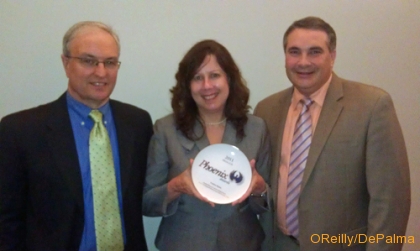
John O’Reilly, Nora DePalma, Joel Williams
On Thursday, November 3, one of the largest Public Relations Society chapters in the US, PRSA GA, awarded O’Reilly/DePalma and American Standard Brands a Phoenix Award in Feature Writing for this public relations case history about case histories.
To find out how we can tell great stories about your products, email John or Nora.
<<What is a Case Study Part 1
<<What is a Case Study Part 2
- Nov
- 9
Posted on November 9, 2011 by Nora DePalma
Question: What is a case study and how can a story about the bathrooms at Loews Hotels garner 40 million impressions for a public relations’ client’s key messages?
Answer: It’s more than a case study or a customer testimonial. It’s a good story. One that a journalist recognizes as a good story. Which is defined as a story that people want to read.
A good story starts with asking the right questions of the right people. In the case of Loews, uncovering the story that Champion 4 toilet from American Standard reduced maintenance calls from overflowing toilets by 80% at their hotels and resorts took dogged pursuit of story leads, led by O’Reilly/DePalma account director Joel Williams.
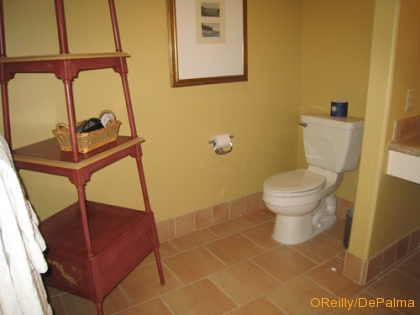
Service calls plunged at the Loews Portofino resort after installing the Champion 4 toilet
It started with a story lead, from the savvy American Standard sales executives who introduced Joel to three facilities managers associated with Loews. “I know what type of details editors are going to want to cover this story, so it’s my job to get the full scoop as efficiently as possible,” Williams said.
The glory is in the details, which means finding the best sources to tell your story. Calling sources and following leads brought Williams to Tony Rodrigues, Regional Director of Engineering for Loews Hotels at Universal Orlando.
Rodrigues was dealing with nearly 120 service calls each month that required a toilet plunger. As chief engineer overseeing three of Loews’ properties on-site at Universal Orlando Resort, multiply this plunger exercise by three and you can see where Rodrigues was ready to blow his lid (sorry).
Williams scored the money quote from Tony Rodrigues, after he put the American Standard Champion 4 to the test:
Maintenance calls at the Loews Portofino Bay property plunged more than 80 percent after replacing 750 Kohler® brand toilets with the American Standard Champion® 4 toilet.

Seasoned brand journalists, Joel Williams and John O’Reilly
As you can see from Williams’s bio on our site, he didn’t just fall off the turnip truck when it comes to understanding building systems. He’s not a writer you can find for $23/hr. It takes knowledge and experience to gain credibility among building specifiers and installers.
And top tier journalists.
<< What is a Case Study Part 1 of 3
Next: What is a Case Study Part 3 of 3, a.k.a. Journalists Are People, Too >>
- Nov
- 8
Posted on November 8, 2011 by Nora DePalma
What is a case study? At its heart, a case study or a testimonial sample is an incredibly well-told story that compels people who experience it to buy into its value proposition.
“Great work. This is exactly the type of PR that makes a difference.”
-Chief Marketing Officer, American Standard Brands
Ten years into our relationship with American Standard Brands, O’Reilly/DePalma enjoyed such feedback after USA Today and The Economist travel blogs, as well as AOL News and others ran stories about how the Loews hotel chain saw maintenance calls for clogged toilets plunge 80% after the Champion 4 toilet was installed.
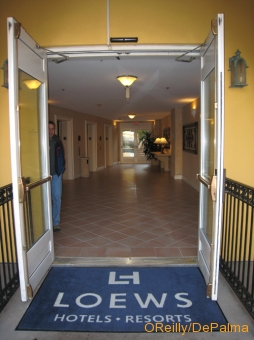
It all hinged on the money quote we sourced through solid brand journalism:
Maintenance calls at the Loews Portofino Bay property plunged more than 80 percent after replacing 750 Kohler® brand toilets with the American Standard Champion® 4 toilet.
We sent our findings around to influencers seeking trends in the hospitality industry and garnered fantastic coverage for American Standard and the Champion 4 toilet:
“‘Think about the embarrassment and inconvenience of a toilet clog,’ Dick Senechal, Loews’ senior vice president of facilities, who calls American Standard’s Champion 4 toilet an industry breakthrough, told me. ‘Eliminating that is a great service for our guests.’” — From Barbara DeLollis of USA Today Hotel Check-In.
“The chain has decided that enough is enough and is to upgrade the toilets across its properties. And we’re not talking any old loo. We’re talking American Standard’s Champion 4.” — From Gulliver, The Economist
“According to James Walsh, American Standard’s vice president and general manager of consumer fixtures, the Champion 4 proves that not all low-flow toilets do a crappy job. ‘The first generation of low-flow toilets had such poor performance that they left many people under the impression they weren’t, pardon the expression, worth a ‘crap,” said Walsh, whose knowledge of the inner workings of toilets has led some of his co-workers to call him ‘Professor Toilet.’” – From David Moye, AOL News
To date, this case study has garnered more than 40 million impressions and is a 2011 PRSA GA Phoenix Award winner for Feature Stories.
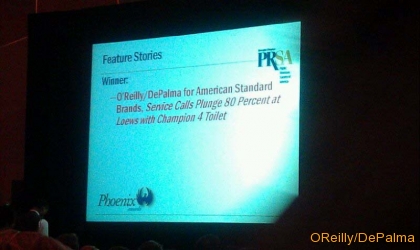
How do big-time “top-tier” media placements like this happen? Three not-so-simple steps:
1. Create a good quality product that solves a real problem. Your product has to do what it says it will do. Otherwise, the Internet will find you out and destroy you. Be authentic.
2. Hire people who know how to find and tell a compelling story so that prospects absorb your message. If you have never fast-forwarded through a TV ad or clicked impatiently through a marketing message to get to the story you want to read, we permit you to believe that you can still force-feed marketing messages.
3. Do your homework to identify the best media outlet and the best journalist to tell your story to a larger audience. Tailor the pitch, keep it channel-exclusive and follow up patiently and appropriately. Think about helping someone else (the journalist) instead of pushing them.
How do you find and tell a good story? It starts by asking the right questions of the right people. In the building products industry, that requires someone with the subject-matter expertise and journalistic tact to engage homeowners, developers, builders, architects, facilities managers, designers, contractors, specifiers and designers. (Remember, people: Don’t try this with a generalist PR agency junior account executive.)
Next: What is a Case Study Part 2
- Oct
- 27
Posted on October 27, 2011 by Nora DePalma
Is your bathroom ready for aging?
By aging, I totally mean you.
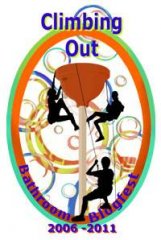
Since starting in the building products industry 20+ years ago, I can’t help but notice that we haven’t made a lot of progress towards accepting bathrooms that accept us at all stages and phases of life.
Which brings me to an interesting bathroom “climbing out” story.
My parents lived on their own until my dad was approaching 97 and my mom was in her 80s. My mom was doing everything she could to shield my dad from the embarrassment of having caregivers take over his daily routines.
On one of my usual visits, Mom couldn’t wait to tell me just the funniest darn story. “Arthur, tell Nora what happened to us in the bathroom last week!”
“Is this something I want to hear?”
“Oh, it’s funny! You’ll love this,” Mom is laughing. Dad is laughing. I wait expectantly.
“Daddy is in his bath and can’t get out!”
“I can’t get out! Stuck!” My dad is leaning onto my mom because he is laughing so hard. “Get it? I’ve fallen in and I can’t get up!”
So far, this is not funny.
“So he calls me in and I try to help. Guess what happens?”
I can’t imagine.
“I fall in with him!” Mom howls.
“Now we’re both stuck, absolutely soaking wet, and neither of us can get out!” Daddy can barely get the words out. They are having the time of their lives telling me this story.
I am not laughing.
My parents don’t want unknown caregivers helping them with their most private of functions, and yet they are unable to climb out of the tub. I have a full-time job and a family an hour and a half away. One of these days, the police will knock on my door to tell me my parents have been found drowned together in the bathtub. We will be on the news.
No one has really figured out how to make an accessible bathroom that doesn’t look like an accessible bathroom. This is not a problem in itself, it’s only a problem because no one wants to install a bathroom that looks like they need an accessible bathroom.
• We have developed all kinds of creatively decorative grab bars. But they are still grab bars.
• We have safe walk-in tubs (the type my Mom actually wanted after she moved in with us as a widow) that can drain rapidly. They look beautiful, as you can see in this story from the October 2011 issue of Fine Homebuilding. But they are still walk-in tubs.
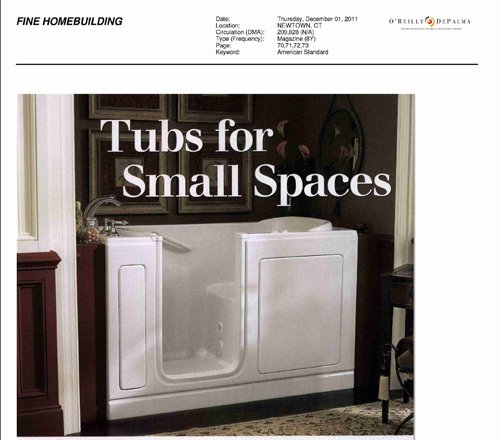
• We have zero threshold seated showers with handshowers that can easily replace an existing tub/shower and work for the whole family. But they are still showers with seats.
To climb out of the bathroom, I challenge our industry to keep working on beautiful solutions for safe, stylish aging-in-place bathrooms.
But I also challenge us, as consumers, to climb out of our singular idea of what makes a beautiful bathroom.
For me, a beautiful bathroom is one that keeps my family safe and independent. And dry.
What is Bathroom Blogfest? Brainchild of the uber-creative Christine B. Whittemore, Bathroom Blogfest originated in 2006, bringing together bloggers from around the globe to write about the importance of bathrooms in the customer experience. Their posts come from a wide range of perspectives that include sociology, marketing, research, psychology, environmental, customer experience, and user-experience design. Read the other creative contributions from 2011:
- Oct
- 24
Posted on October 24, 2011 by Nora DePalma

Goat publicist Patty Woodland blogs at Broken Teepee and The Maaaaa of Pricilla.
When Jersey girl Patty Woodland left the hustle and bustle of city life and moved out to the open country of Montana, she never expected to become a farmer, much less a goat publicist. But the change of pace and scenery were both a welcome sight to Woodland and her husband after years of hard work building his law practice in NJ.
As a blogger, Woodland spends hours each day writing about farm life from her perspective on her Broken Teepee blog and from the perspective of her goat Pricilla on The Maaaaa of Pricilla. Yes, you read it correctly: a GOAT.
For this goat farmer, there’s no more honking cars, just the maaaaas of the goats she milks to make her Happy Goats Soap sold through Etsy. With the help of spokesgoat Pricilla’s witty blog, Woodland is able drive interest for her specialty craft product and, therefore, sales of the soap.

Pricilla the Goat on the farm in Maaaaa-ntana
Woodland, a.k.a. “the publicist” as Pricilla the goat calls her, finds one of the strongest traffic generators-and hence sales-is commenting on other blogs. She states that it’s a two-way road in the blogging world and bloggers must be active with their own blogs, as well as others. Helping the matter, her avatar is the face of one of her goats, which is sure to raise curious eyebrows as it stands next to human faces in comment sections.
The same approach is taken with Woodland’s personal blog, Broken Teepee, which is described as a collection of “product reviews, giveaways and life on the farm.” Through her interesting content and interaction on other blogs, Woodland’s Broken Teepee blog typically generates 9,000 page views per month from approximately 4,000 unique visitors.
How to Pitch Brands
Woodland frequently sends letters to brands, requesting to test new products that she needs for her home and farm. She promises to write honest reviews on everything from books to new toilets or faucets that she offers to install in her energy-efficient yurt. When applicable, she even goes the extra step and snaps pictures of the product in use, as she did in this review for our American Standard client.
In Woodland’s eyes, she is no expert of book or product reviews, however, her remote location means that the majority of her shopping is done online. Which combined with her influence among loyal readers, makes her fairly valuable to brands.
The days of living in the city are no longer a desire for Woodland. Green Acres is the place for her and the goats. And for brands who want to reach the best personal blogs.
- Aug
- 29
Posted on August 29, 2011 by Nora DePalma
***Help Irene victims in the Bahamas via Kitchen and Residential Design ***
Social media isn’t just all fun and branding anymore. Twice in seven days, I’ve seen it firsthand become the future of breaking news events: reporting faster and more detailed than CNN or The Weather Channel.
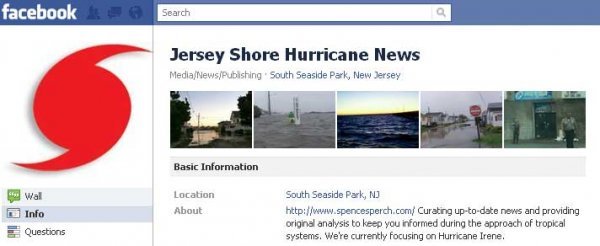
Social Media and the East Coast Earthquake
Our conference table and chairs started swaying side to side during a client meeting in Long Island City, NY. We all looked at each other and then looked around. Did a really BIG truck just go by? Did terrorists strike in Manhattan? That wasn’t just an earthquake in NY, was it?
“Check CNN’s site,” someone yelled, as we all lunged for our laptops and cell phones. “I should get a breaking news email in a minute,” someone else said.
I checked my Twitter stream on my smartphone. For the past two years, I’ve learned most breaking news on Twitter, so it didn’t even occur to me to turn on the TV or log on to CNN.
Sure enough, faster than you could say, “I don’t know why the darn Internet is being so slow,” there it was: reports of shaky ground from Virginia to Vermont. I was the first at the conference table to confirm it was an earthquake, and the first to report that the epicenter was in VA .
Social Media and Hurricane Irene
As all social media users know, the medium is not for monologues, it’s for dialogues: two-way communications. A savvy social-media civilian on the Jersey shore established Jersey Shore Hurricane News on Facebook late last week to facilitate real-time ground-truth reports of Hurricane Irene related news for New Jersey.
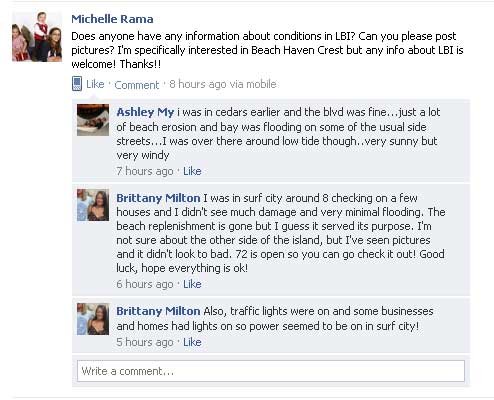
The group surged from about 1,000 members Friday night to more than 26,000 by Monday morning. Fans were seeking and sharing information on road closures and re-openings, as well as where to find gas stations that were still open and where to buy generators.
We got out of the NY/NJ area well in advance of Hurricane Irene, but I was agonizing over the news from my hometown of Long Beach Island, NJ.
In the Dark Ages—say, 1981 and earlier—we turned to our trusted network or local affiliate TV news anchor of choice when disaster struck. Count me now among the believers that any of us can be breaking news reporters as long as we can see and hear, and then access a publishing platform to report what we’ve seen and heard.
While repeatedly reminding fans “We are not professional forecasters; this is a service to keep you informed,” Jersey Shore Hurricane News delivered news on Facebook faster and more accurately than any other news source. The accuracy came from the participants, answering questions about rumors and sharing ground-truth observations.
No doubt this will be back for future disasters. And so will I.
- Aug
- 15
Posted on August 15, 2011 by Nora DePalma
The average time spent on a kitchen bath dealer website ranges anywhere from about 43 seconds up to about 2 minutes and 35 seconds, according to Kitchen & Bath Design News columnist, Leslie Hart in the June 2011 issue.
Leslie identifies what every kitchen and bath dealer must provide on their website to give your best sales prospects what they need. Read more at Kitchen & Bath Design News.
- Aug
- 9
Posted on August 9, 2011 by Joel Williams
Circulator pumps were the highlight of this month’s Reeves Journal magazine that featured a case study from global pump and pump systems manufacturer Grundfos. Over the last five years, circulators used for hydronic and radiant heating systems have become more energy-efficient thanks to ECM (Electronically Commutated Motor) technology. The intelligent speed control these circulators provide is drastically reducing energy use without sacrificing performance.
magazine that featured a case study from global pump and pump systems manufacturer Grundfos. Over the last five years, circulators used for hydronic and radiant heating systems have become more energy-efficient thanks to ECM (Electronically Commutated Motor) technology. The intelligent speed control these circulators provide is drastically reducing energy use without sacrificing performance.
To understand why this technology is so appealing, put yourself in the shoes of plumbing contractor Mike Wolking, who was asked to design a plumbing and hydronic heating system for a custom solar home in south-central Colorado.
In addition to specifying a system that could provide space heating and domestic hot water for the 2,300-square-foot, two-story ranch, Wolking’s design had to consume roughly 40 percent less energy. Read more here.
- Aug
- 1
Posted on August 1, 2011 by Nora DePalma
This is a tale of two companies forging a very different path to profitability: Patagonia and Trader Joe’s. One is a story I heard. The other is a story I Iived.
 Patagonia: At the recent Emerald Circle summit hosted by our wonderful friends at Green Builder Media, one of the most compelling speakers was Patagonia CEO Casey Sheahan. Faced with a recession-generated business slowdown, Sheahan came home one day and told his wife Tara that he thought he would be instituting layoffs.
Patagonia: At the recent Emerald Circle summit hosted by our wonderful friends at Green Builder Media, one of the most compelling speakers was Patagonia CEO Casey Sheahan. Faced with a recession-generated business slowdown, Sheahan came home one day and told his wife Tara that he thought he would be instituting layoffs.
Tara asked him: “Are you leading from fear or are you leading from love?”
Not a question I suspect a lot of CEOs get. Or consider. Businesses exist to make money, not to help people feel the love. But it made Sheahan stop and think. Did he have alternatives? Had they found all the possible efficiencies? The market would be back at some point. What about the costs of recruiting and training? Eventually, he decided on the following:
• No layoffs, but severely limited raises and no bonuses.
• Direct and honest communications with employees about the decision and the implications.
• Reducing other operating expenses by 20 percent.
Not every job was saved. The reduction in operating expenses meant identifying and terminating the few poor performers. No one likes to tell anyone they no longer have a job, but taking a hard line helped keep everyone else employed.
“Jack Welch was famous for his strategy of focusing on the 5% of employees who were poor performers,” Sheahan said. “I like to focus on the 95% who are good to excellent.”
Results: “Business didn’t just increase. It went through the roof,” Sheahan told us. He said his employees became more motivated than ever, realizing that things could have gone very differently. The resulting loyalty improved both retention and performance.
The good performers were rewarded. The business and Sheahan were rewarded.
Which brings us to Trader Joe’s.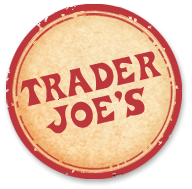
Our son worked at a Trader Joe’s for about a month when he was involved in a horrible accident on his way home from work. Here is the note he sent to Trader Joe’s last month:
Last fall, October 21 to be exact, I fired up my motorcycle and headed on home. Not 5 minutes in to the ride, a car attempting to make an illegal u turn cut from the right lane in to the left and I collided with them. Long story short, I spent 6 weeks in the hospital, and was lucky to be alive.
My crew only knew that I did not show up for work the next day, until one of the EMT’s came by and informed them of what happened.
On my first return visit there was practically a line of people waiting to greet me. I couldn’t believe it. They had only known me for a month, but everyone welcomed me back as if I was family. Genuine feelings and concern were shown by every single person. I have never experienced anything like that before.
As I had only been employed for a month, I did not qualify for any leave. When I returned, my Captain assured me I was welcome to return as soon as I was ready.
I have now been back to work for almost 6 months. I still have various problems that limit me to working 4 days a week, and sometimes force me to leave early. The family here has stepped in every chance they have to help me through the work day.
None of this is shown in the job description or any benefits package. It just goes to show what a company built on simple values can create not just for its customers, but for its employees. The grocery business is about stocking shelves. The TRADING business is about building relationships and maintaining them through consistency, integrity, and apparently, random acts of kindness performed on a regular basis. WOW.
Alex is definitely a performer, a hard-worker with exceptional customer service skills. Trader Joe’s clearly recognizes that. But in a recession, there’s no reason to think they could not have easily replaced him.
They chose to stand by him.
Results: Many of our friends already shopped Trader Joe’s for their unique shopping experience. Now, no one in our circle of friends and colleagues will shop anywhere else, given the choice. More Trader Joe’s business results here.
A brave new world for business? Not for all; some brands will continue to invest in obfuscation to tell their story. Other will invest in government lobbying power to avoid competition.
Others will compete just as fiercely, but—dare I say it?—with love. Because that’s what consumers are increasingly demanding, according to studies like this showing that consumers are taking values into account in their purchase decisions.
It’s the return on relationships. And it works.
- Jun
- 15
Posted on June 15, 2011 by Nora DePalma
Leslie Hart is officially joining us today! Leslie Hart joins O’Reilly/DePalma as a New York-based partner, after several years of project collaboration with us in our building and architecture brand consultancy.
If you’re in the kitchen & bath industry, you know Leslie. The Consumer Insights columnist for Kitchen & Bath Design News and honoree in the Kitchen & Bath Industry Hall of Fame, has more than 30 years of in-depth marketing and communications experience in all channels of the kitchen and bath industry.
Trained as a journalist, Leslie was editor and publisher of Kitchen and Bath Business. That is how we first met when I started in public relations at American Standard in 1989.
Leslie and I worked on the Kitchen Bath Industry Show for several years, with Leslie on the trade show management/publishing side, while I was the marketing director of the NKBA, the association owner of the show.
Last year, we teamed up to produce the new NKBA Kitchen and Bath planners.
Our clients will benefit from Leslie’s brand storytelling skills, as well as her expertise in consumer buying behavior related to kitchen and bath brands. Leslie was director of strategic marketing at Meredith Corporation, publishers of Better Homes and Gardens and other leading consumer magazines, where she created integrated marketing programs for The Home Depot and Sub-Zero, among others.
Read more from the O’Reilly/DePalma press release today.














































